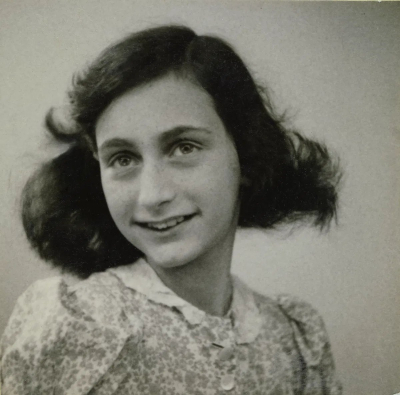Auschwitz concentration camp (German: Konzentrationslager Auschwitz (pronounced [kntsntatsionsla avts] (listen)); also KL Auschwitz or KZ Auschwitz) was a complex of over 40 concentration and extermination camps operated by Nazi Germany in occupied Poland (in a portion annexed into Germany in 1939) during World War II and the Holocaust. It consisted of Auschwitz I, the main camp (Stammlager) in Owicim; Auschwitz II-Birkenau, a concentration and extermination camp with gas chambers; Auschwitz III-Monowitz, a labor camp for the chemical conglomerate IG Farben; and dozens of subcamps. The camps became a major site of the Nazis' final solution to the Jewish question.
After Germany sparked World War II by invading Poland in September 1939, the Schutzstaffel (SS) converted Auschwitz I, an army barracks, into a prisoner-of-war camp.The initial transport of political detainees to Auschwitz consisted almost solely of Poles for whom the camp was initially established. The bulk of inmates were Polish for the first two years.In May 1940, German criminals brought to the camp as functionaries, established the camp's reputation for sadism. Prisoners were beaten, tortured, and executed for the most trivial reasons. The first gassingsof Soviet and Polish prisonerstook place in block 11 of Auschwitz I around August 1941. Construction of Auschwitz II began the following month, and from 1942 until late 1944 freight trains delivered Jews from all over German-occupied Europe to its gas chambers. Of the 1.3 million people sent to Auschwitz, 1.1 million were murdered. The number of victims includes 960,000 Jews (865,000 of whom were gassed on arrival), 74,000 ethnic Poles, 21,000 Roma, 15,000 Soviet prisoners of war, and up to 15,000 other Europeans. Those not gassed were murdered via starvation, exhaustion, disease, individual executions, or beatings. Others were killed during medical experiments.
At least 802 prisoners tried to escape, 144 successfully, and on 7 October 1944, two Sonderkommando units, consisting of prisoners who operated the gas chambers, launched an unsuccessful uprising. Only 789 Schutzstaffel personnel (no more than 15 percent) ever stood trial after the Holocaust ended; several were executed, including camp commandant Rudolf Hss. The Allies' failure to act on early reports of atrocities by bombing the camp or its railways remains controversial.
As the Soviet Red Army approached Auschwitz in January 1945, toward the end of the war, the SS sent most of the camp's population west on a death march to camps inside Germany and Austria. Soviet troops entered the camp on 27 January 1945, a day commemorated since 2005 as International Holocaust Remembrance Day. In the decades after the war, survivors such as Primo Levi, Viktor Frankl, and Elie Wiesel wrote memoirs of their experiences, and the camp became a dominant symbol of the Holocaust. In 1947, Poland founded the Auschwitz-Birkenau State Museum on the site of Auschwitz I and II, and in 1979 it was named a World Heritage Site by UNESCO.
Annelies Marie Frank (German pronunciation: [ˈanəˌliːs maˈʁiː ˈfʁaŋk], [ˈʔanə ˈfʁaŋk] (listen), Dutch: [ˈɑnəˌlis maːˈri ˈfrɑŋk], [ˈʔɑnə ˈfrɑŋk]; 12 June 1929 – c. February 1945) was a German-Dutch diarist of Jewish heritage. One of the most discussed Jewish victims of the Holocaust, she gained fame posthumously with the 1947 publication of The Diary of a Young Girl (originally Het Achterhuis in Dutch, lit. 'the back house'; English: The Secret Annex), in which she documents her life in hiding from 1942 to 1944, during the German occupation of the Netherlands in World War II. It is one of the world's best-known books and has been the basis for several plays and films.
Anne was born in Frankfurt, Germany. In 1934, when she was four and a half, her family moved to Amsterdam, Netherlands, after Adolf Hitler and the Nazi Party gained control over Germany. She spent most of her life in or around Amsterdam. By May 1940, the Franks were trapped in Amsterdam by the German occupation of the Netherlands. Anne lost her German citizenship in 1941 and became stateless. As persecutions of the Jewish population increased in July 1942, they went into hiding in concealed rooms behind a bookcase in the building where Anne's father, Otto Frank, worked. Until the family's arrest by the Gestapo on 4 August 1944, Anne kept a diary she had received as a birthday present, and wrote in it regularly.
Following their arrest, the Franks were transported to concentration camps. On 1 November 1944, Anne and her sister, Margot, were transferred from Auschwitz to Bergen-Belsen concentration camp, where they died (probably of typhus) a few months later. They were originally estimated by the Red Cross to have died in March, with Dutch authorities setting 31 March as the official date. Later research has suggested they died in February or early March.
Otto, the only survivor of the Frank family, returned to Amsterdam after the war to find that Anne's diary had been saved by his secretary, Miep Gies. He decided to fulfill Anne's greatest wish to become a writer and publish her diary in 1947. It was translated from its original Dutch version and first published in English in 1952 as The Diary of a Young Girl, and has since been translated into over 70 languages.

1944Oct, 30
Anne and Margot Frank are deported from Auschwitz to the Bergen-Belsen concentration camp, where they die from disease the following year, shortly before the end of WWII.
Choose Another Date
Events on 1944
- 10Apr
Auschwitz concentration camp
Rudolf Vrba and Alfréd Wetzler escape from Birkenau death camp. - 13Apr
Soviet Union
Diplomatic relations between New Zealand and the Soviet Union are established. - 26Jun
RAF
World War II: San Marino, a neutral state, is mistakenly bombed by the RAF based on faulty information, leading to 35 civilian deaths. - 26Aug
Charles de Gaulle
World War II: Charles de Gaulle enters Paris. - 31Dec
Nazi Germany
World War II: Hungary declares war on Nazi Germany.

 English
English  español
español  français
français  português
português  русский
русский  العربية
العربية  简体中文
简体中文 